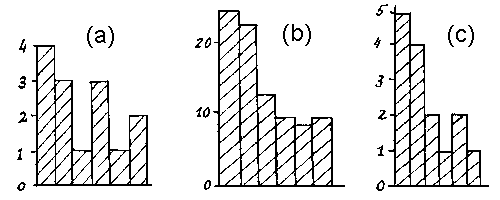
|
| Fig.26 |
In [3] the operation of multiple smoothing
has been suggested. In this case smoothing is done{made} iterativelly
until the condition will be satisfied that at two sequential stages the
same zone (besides the unique one) has the maximum sum (among all zones
at the given stage). The center of this zone is accepted as a search cluster
point. Though such the procedure has not shown crucial advantages in comparison
with once made smoothing, it is expedient to have its in a collection of
tools of the analysis of hypogram intersection. Multiple smoothing will
coordinate a cluster point (zone) with its environment. If this point is
on a cluster boundary it is gradually shifted in its center. The stability
of this point (zone) at several sequential stages of smoothing is some
performance of its common reliability. Besides, if the cluster top is not
acute, i.e. consists of several zones that (due to the count of neighboring
zones) one zone of maximum weight will be allocated which position will
depend on a context (i.e. weightinesses of enclosing zones).
In last version
of program realization of hypotheses accumulation process an attempt has
been undertaken to limit an amount of the zones participating in the subsequent
procedure of smoothing. For this purpose so-called areas of intersection
were selected, which represent set of the zones marked more than two hypograms,
and also one time marked zones directly adjoining to this set (the neighbourhood,
as well as earlier, the nearest 3*3*3). However, in spite of the fact
that, for example in the circumscribed experiment, execution time of the
smoothing procedure on the average was reduced with 1.5 up to 0.5 s, it
was additionally required about 0.5 s for detection of these areas (thus
the number of analysed zones was reduced on the average in 5 times). Probably,
this procedure will have essential advantages at more rigid restrictions
on entrance in an area of intersection. Naturally, the operation of restriction
of number of analysed zones has an essential importance at multiply repeated
smoothing.